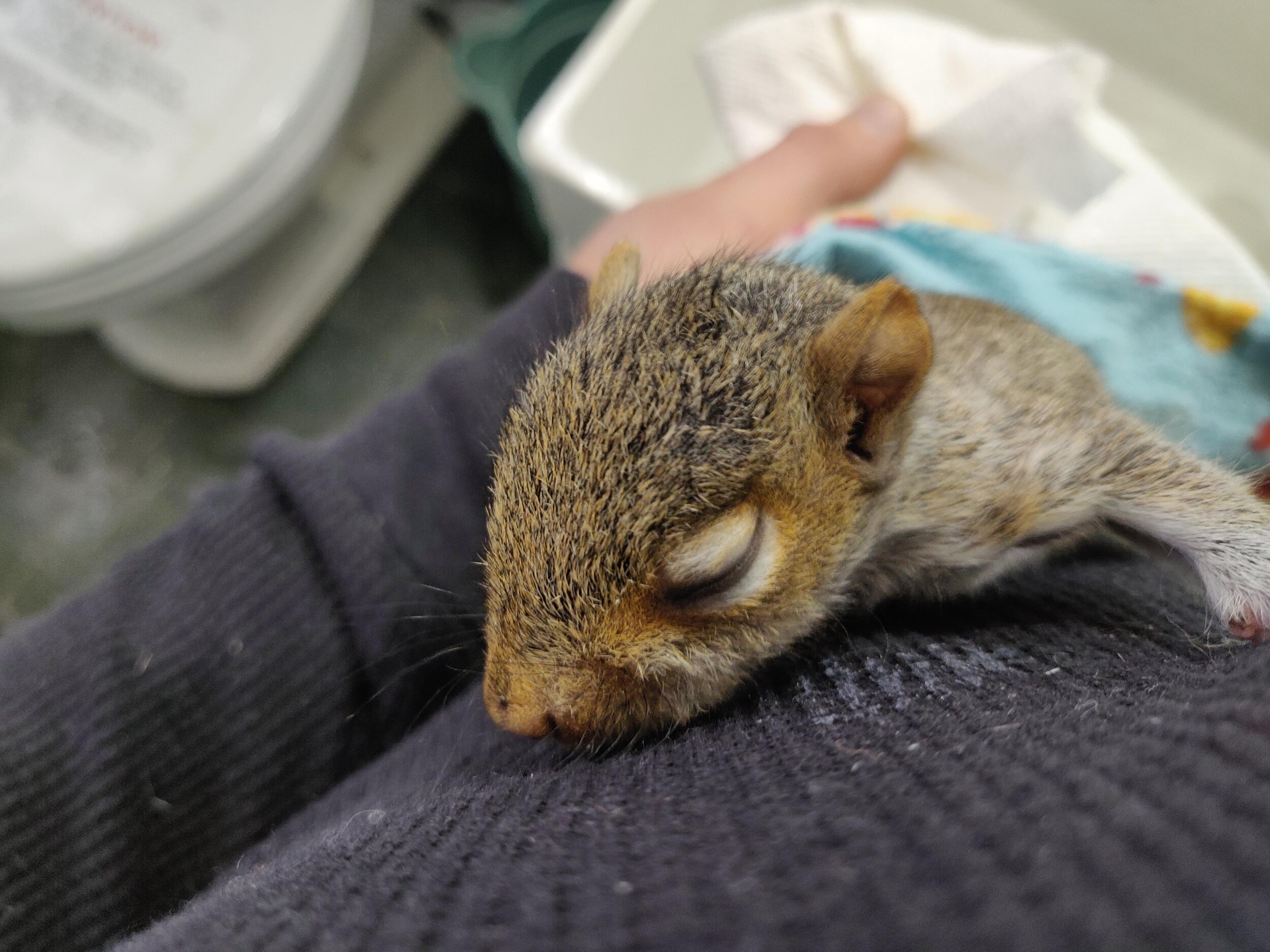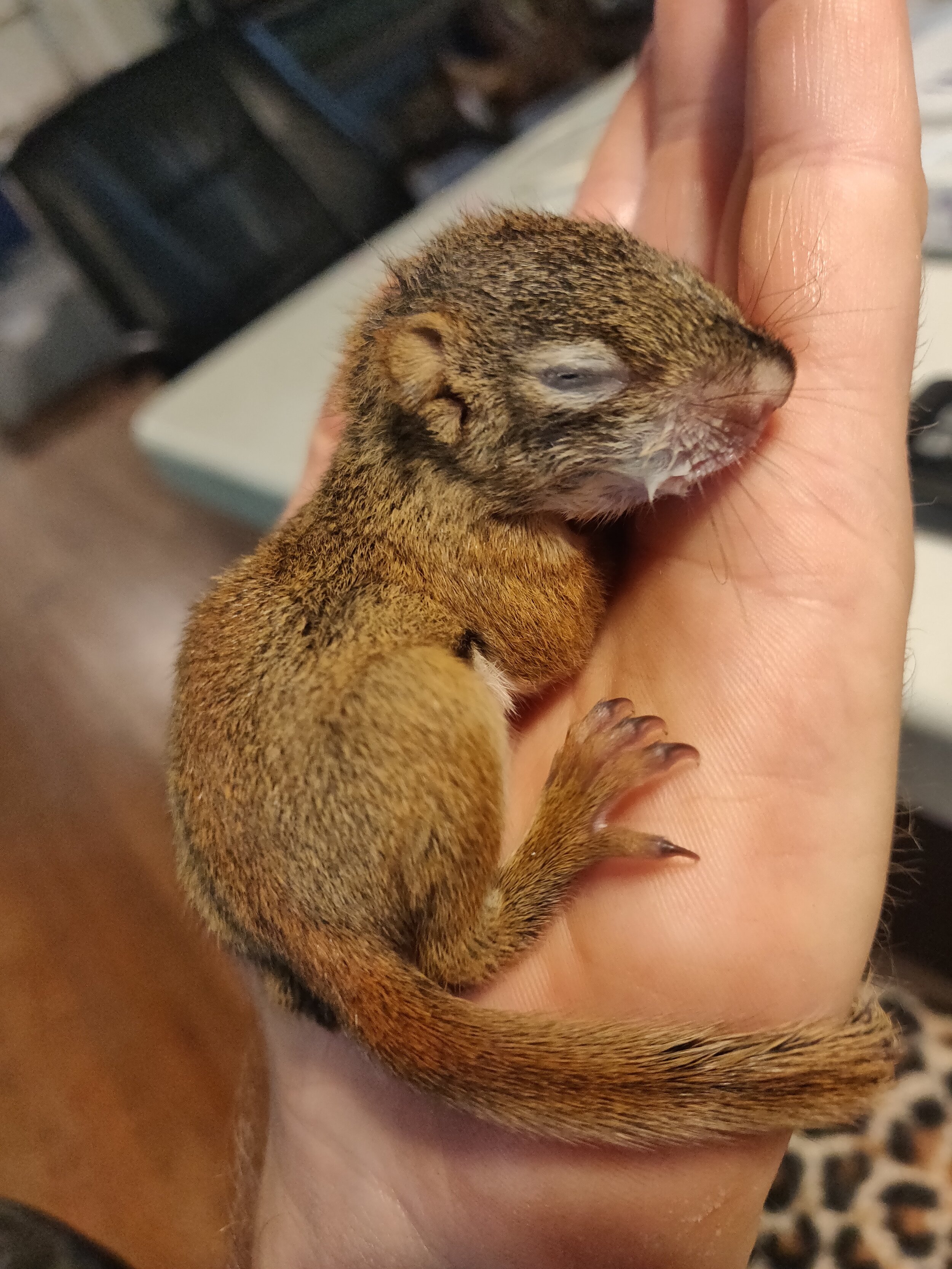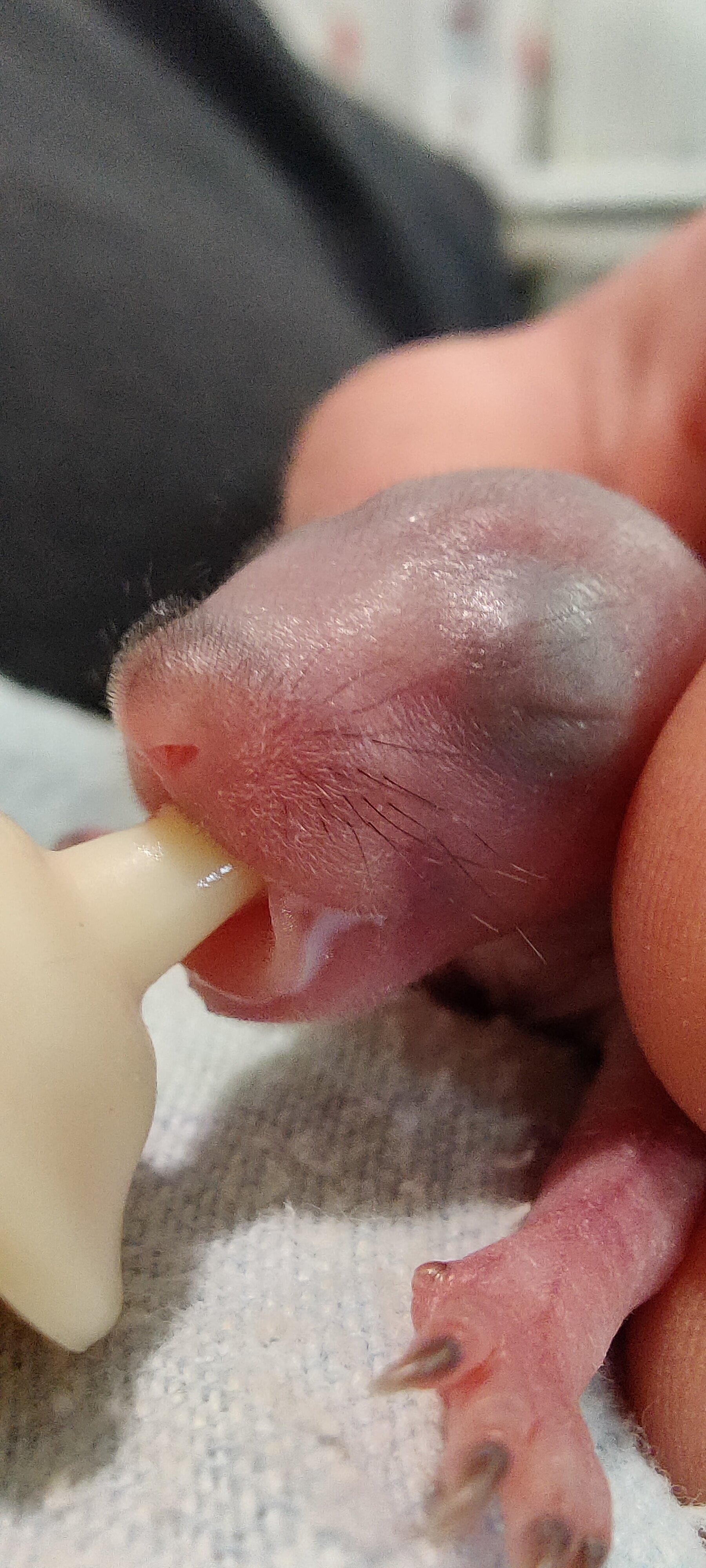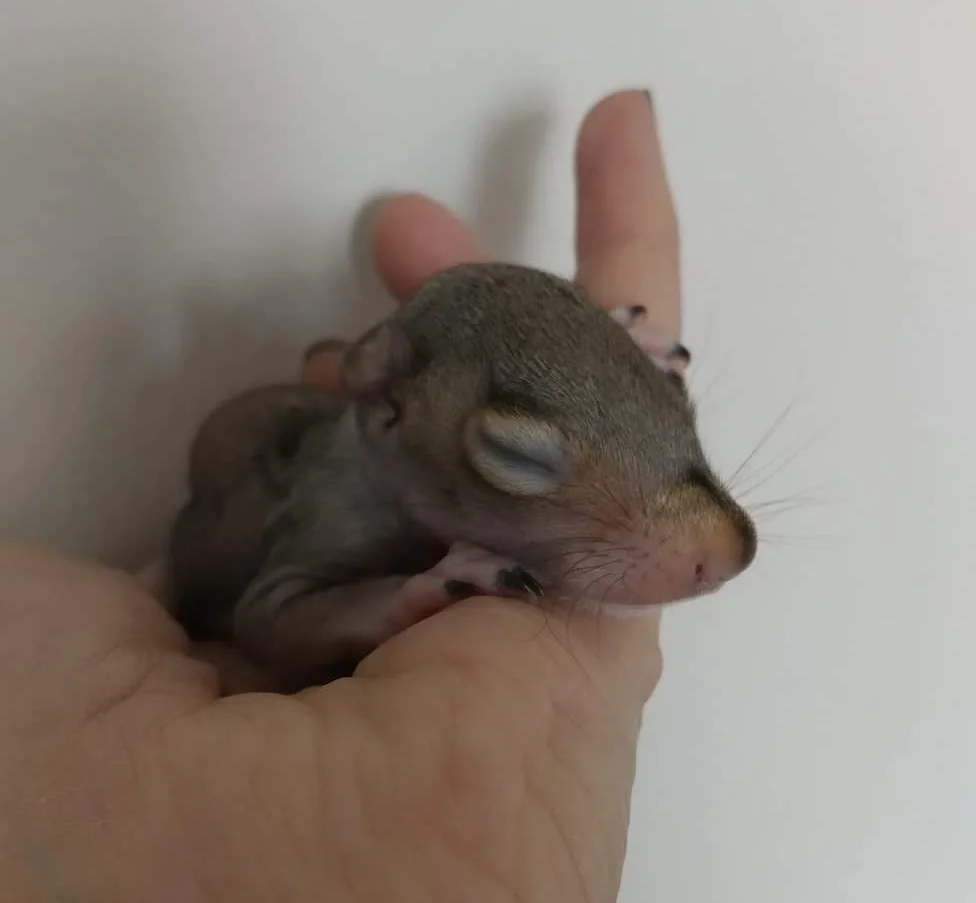This squirrel was admitted with a large abscess on its jaw. We drained the fluid, then administered antibiotics and pain medication. Patient 0061 is now on the road to recovery and release.
Now Showing: Baby Squirrels
Eastern Grey Squirrels can breed twice a year. Metro Wildlife recently admitted the some babies from the second litter.
If you happen upon a baby, the best outcome will result from a reunion with its mother. We always encourage people to facilitate this “non-intervention” whenever possible.
We recently received a call involving a tree removal which evicted the babies from their home. After talking the homeowner through the process, the mother was able to recover the youngsters and replace them into a secondary nest.
After decades at this game, our advice is this:
OBVIOUS INJURY
1) If you see blood, flies, or the squirrel was attacked by a pet, bring it in.
-or-
NO EVIDENT INJURY
1) Place the baby(s) in a small fleece-lined container and place it next to the nearest tree.
2) Wait OUT OF SIGHT for an hour or two, then return to see if the mother retrieved the babies.
3) If the mom doesn’t return, bring the babies to the Philadelphia Metro Wildlife Center.
DO NOT GIVE THE BABY SQUIRREL FOOD OR WATER. We must restore the squirrels to a stable temperature and level of hydration before they can eat. Improper feeding can cause irreversible damage.
First Baby Squirrel of the Year Contest
By Rick Schubert, Director
A long-standing tradition of Philadelphia Metro Wildlife Center, which we carried with us from our previous incarnation, is the First Baby Squirrel of the Year Contest.
Wildlife rehabilitation ebbs and flows with the seasons, and after 21 years of doing this, the cycles become second nature and part of your very being. Injured adult animals are the constant, twelve months per year, and that is the heart and soul of the work we do. But neonate animals usually start in late winter and end in the autumn--with about a 3 month hiatus in the middle where there are almost no babies.
Baby squirrels start in late winter, sometimes as early as February. We get many species of squirrels here...including the woodchuck, which is actually a marmot, which is a type of large ground squirrel. The most common by far, the Eastern Gray Squirrel, tends to reproduce twice a year: late winter and late summer.
Volunteers try to pick the day when the first baby squirrel will arrive, for bragging rights and the infamous "No-Prize". They write their names on a whiteboard with their selection. I'd say about two thirds of the years the first one arrives in February, one-third of the time in March--always a tiny, hairless, pink little baby. Then it begins: weeks and weeks on end of time-consuming syringe-feeding of babies, every four hours. Weighings, cleanings, medicatings, and meticulous recording of data.
"Winner gets a No-Prize". As a child, reading Marvel Comics, if you could spot an inconsistency or misspelling in X-Men or Doctor Strange or Daredevil, and you sent them a letter pointing this out (this was before e-mail), the late great Stan Lee would (only slightly sarcastically) send you an envelope in the mail with "Congratulations on your No-Prize!" written on it. The envelope was, of course, empty. It was a gentle chiding not to take comic books, or life itself, too seriously. None of us get out of it alive.
Squirrels are no exception. Their lives are relatively brief, and the majority of squirrels will end up as food for a predator at some point in their life. But all life deserves a chance, and deserves freedom, and we give them back the freedom we took away with our cars, chainsaws, pesticides, and lack of concern for our animal neighbors.
My pick was February 21st. I really dig squirrels.



















